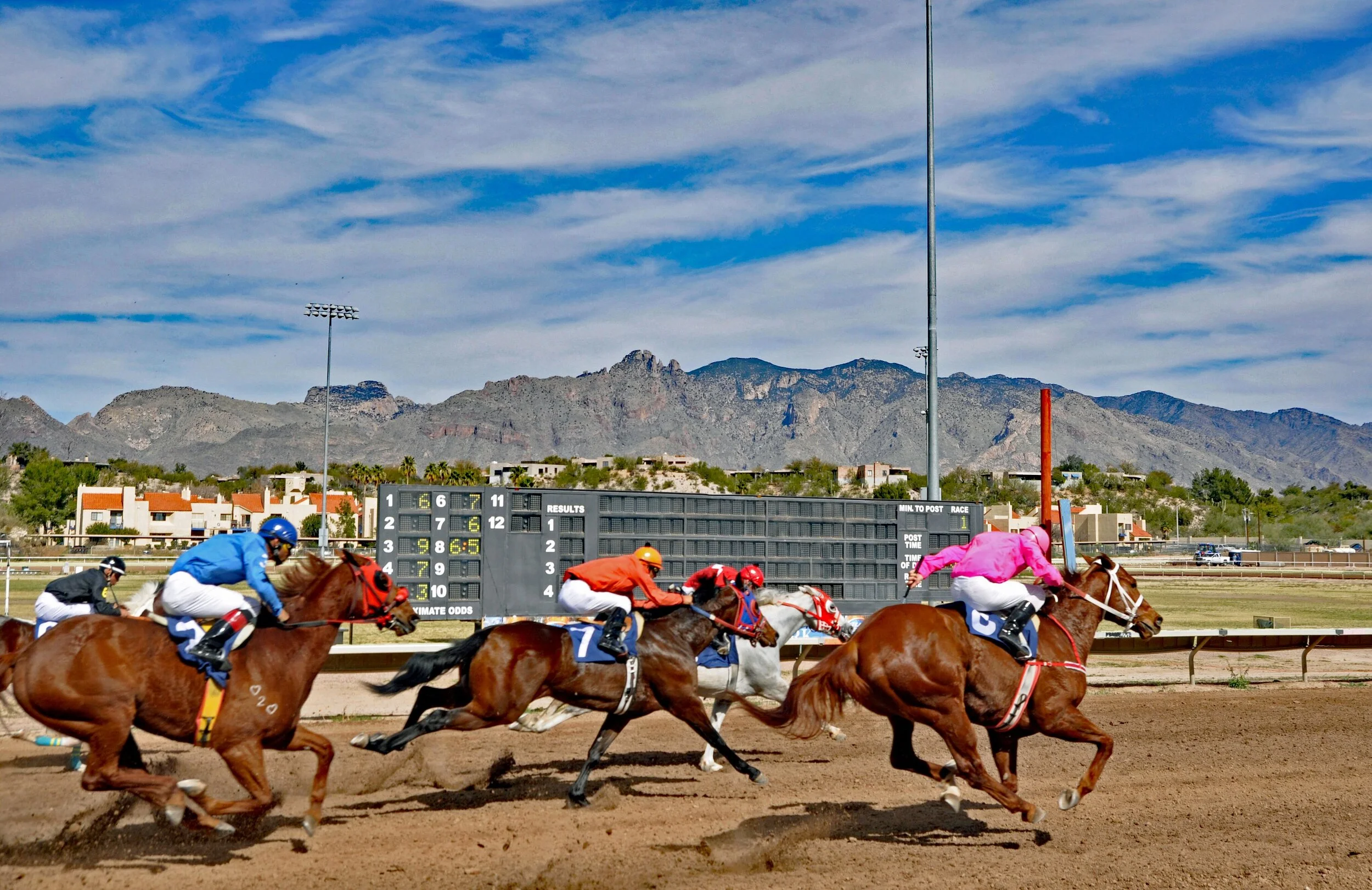
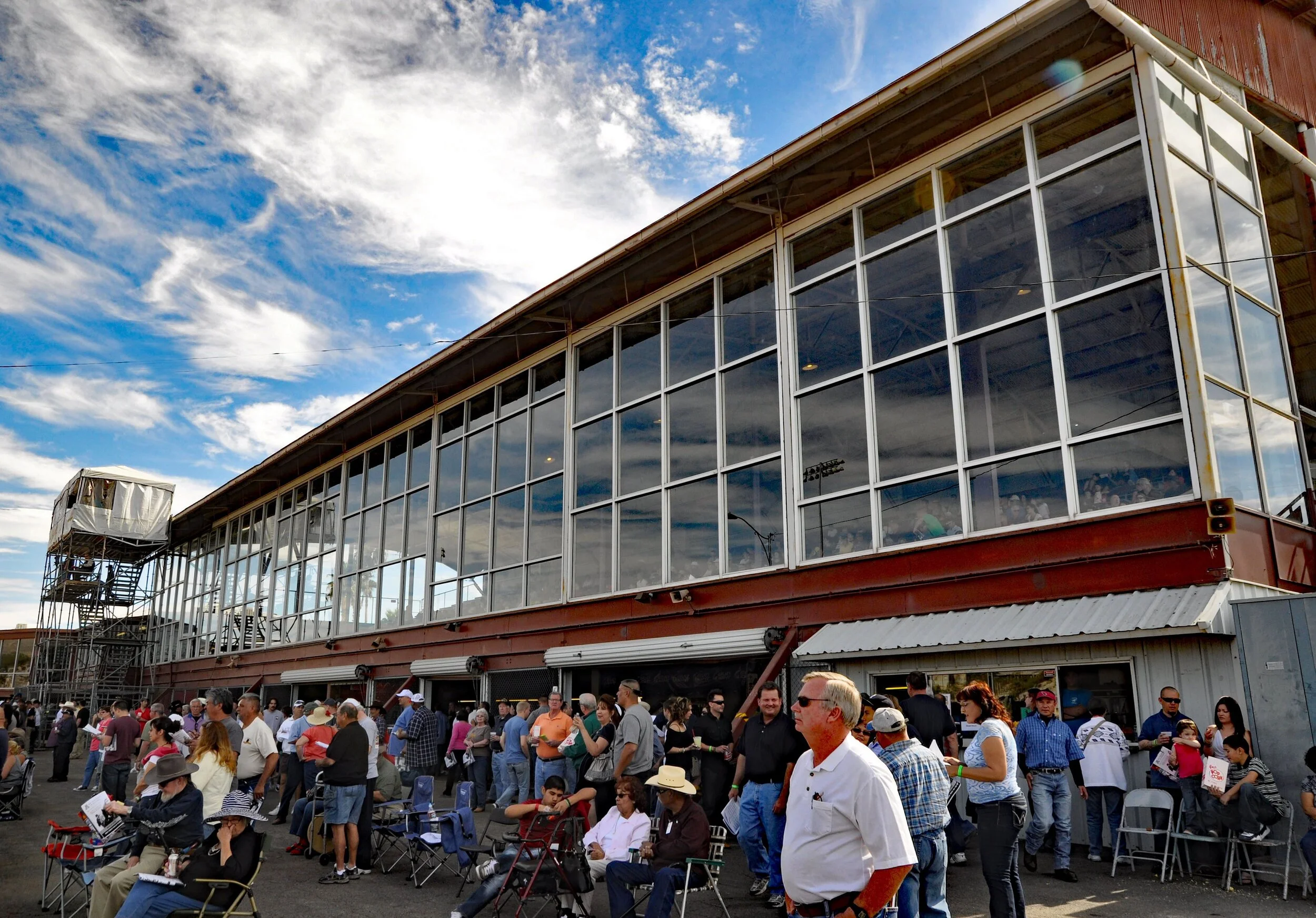
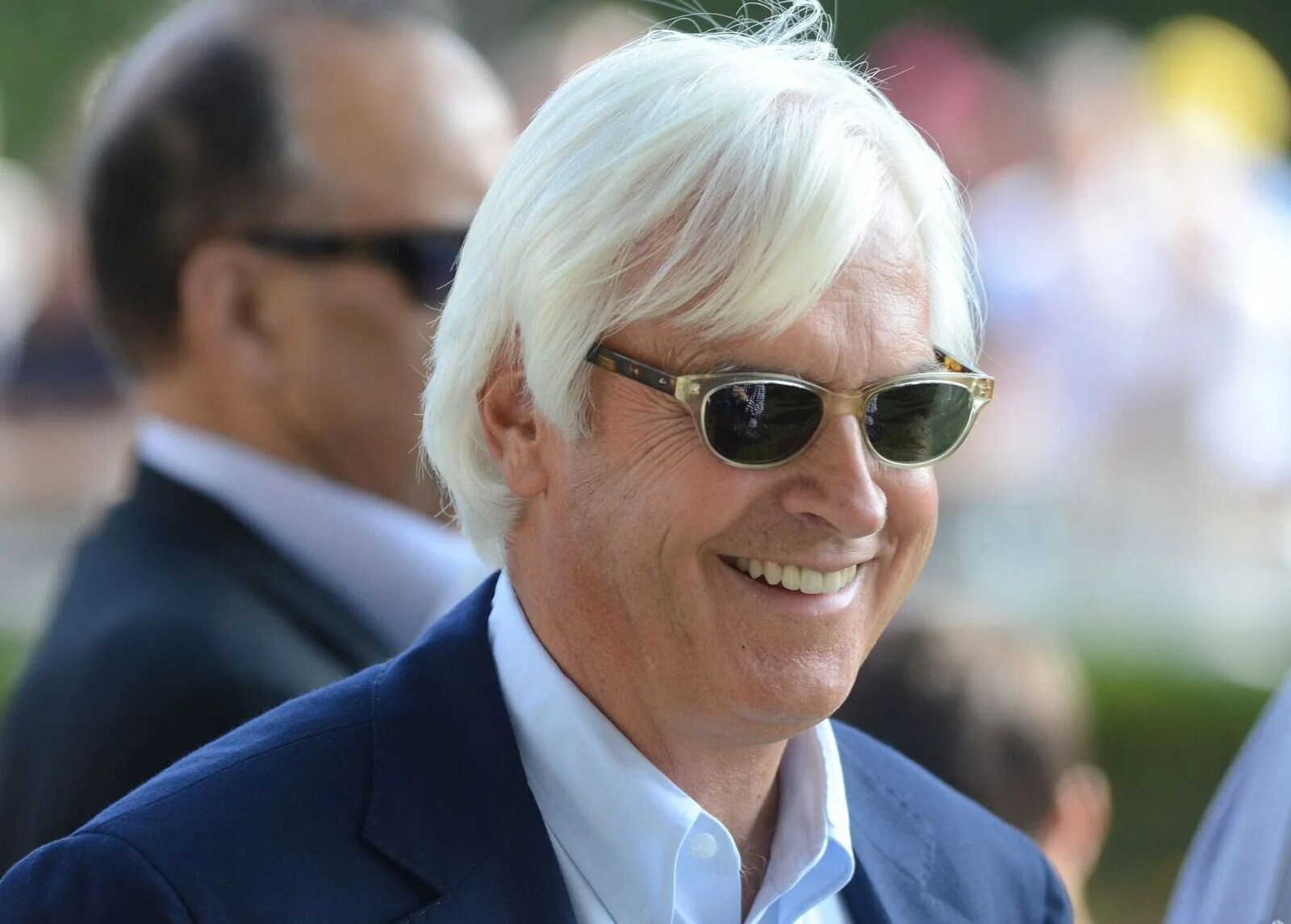



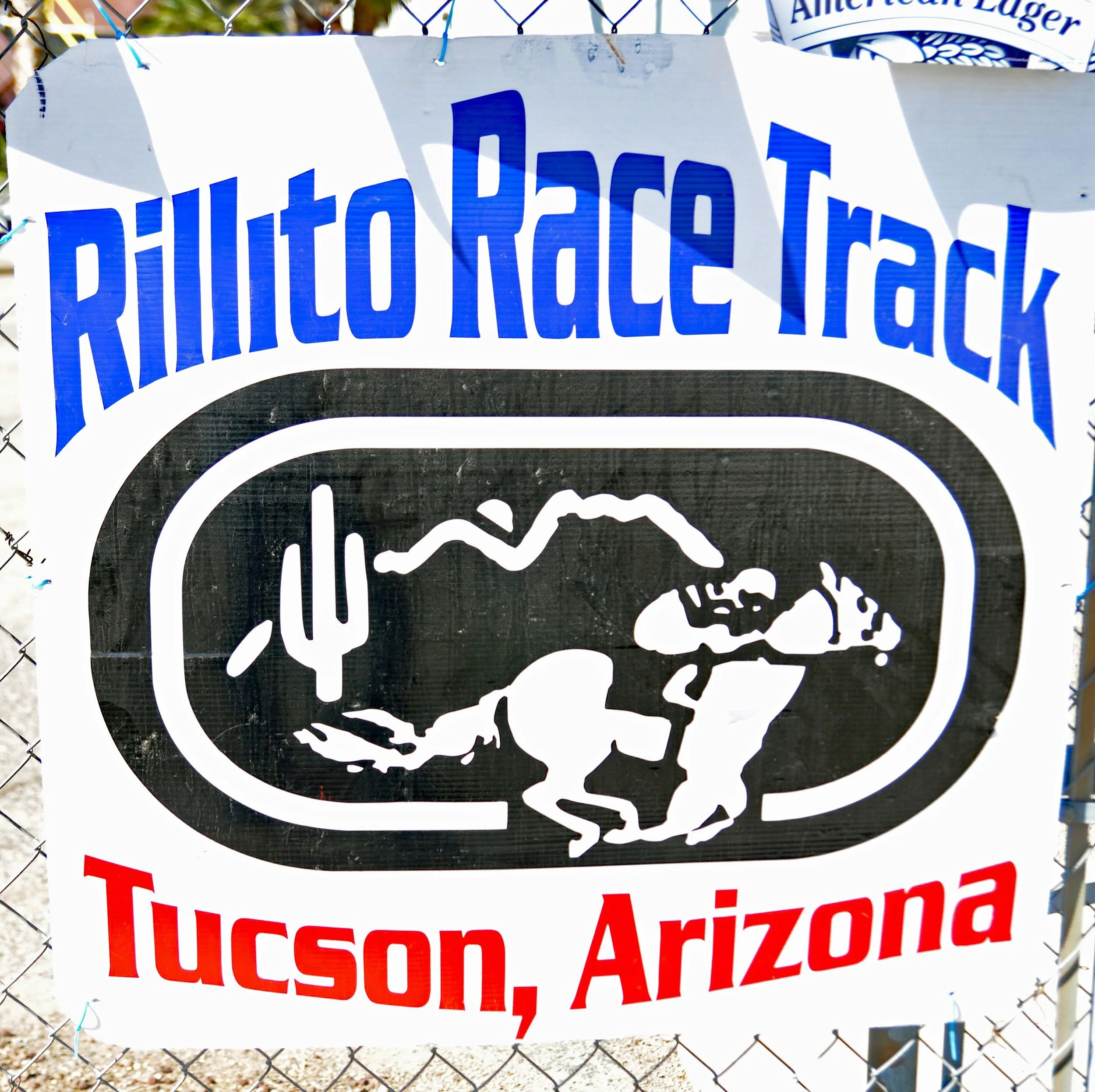
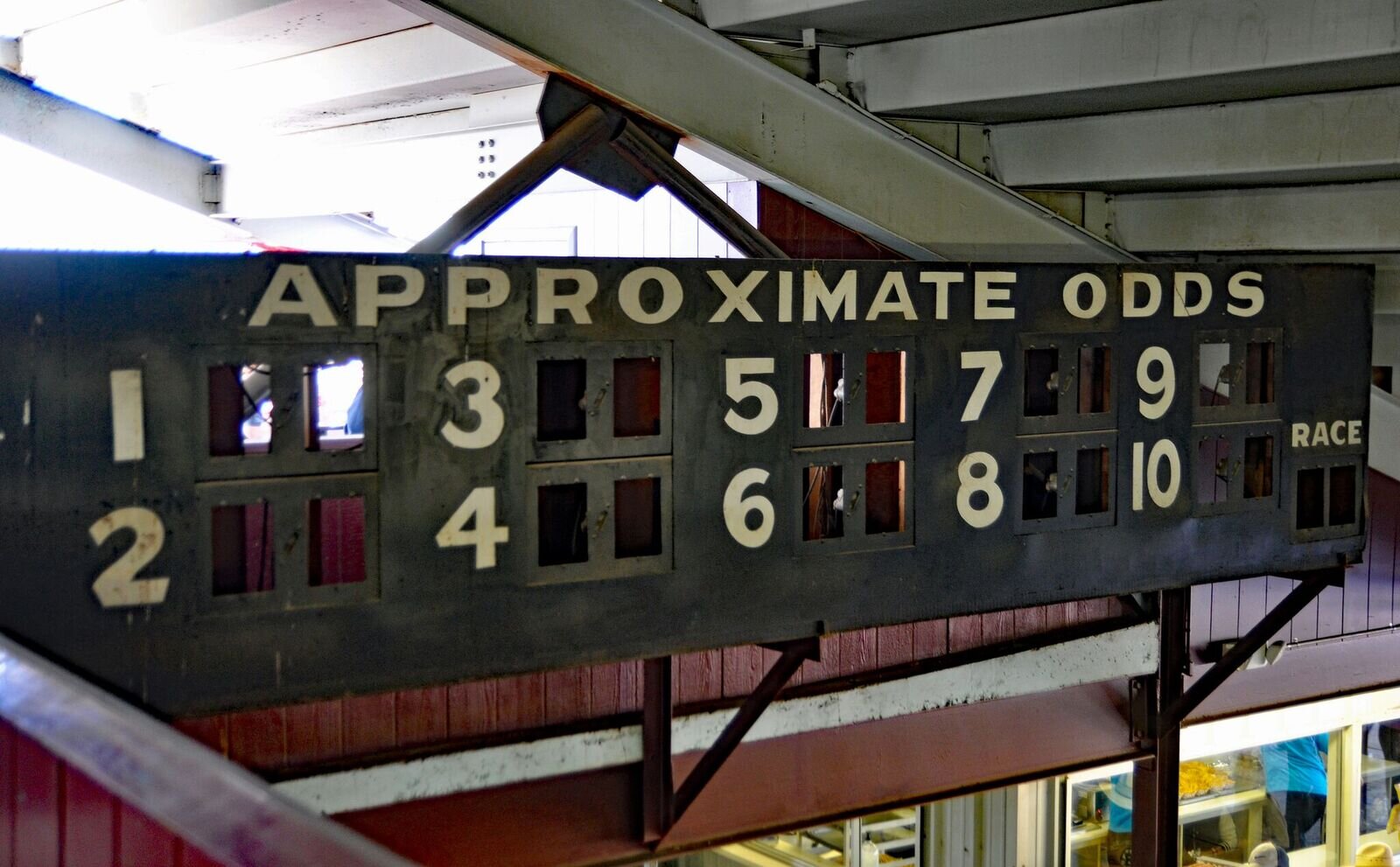
Rillito Park
By: Tom Ferry
It has been called “The Birthplace of American Quarter Horse Racing.” For 77 years, this Tucson, Arizona racetrack has persevered. And during seven weekends each February and March, you can experience one of the most engaging racing environments in America.
So much about Rillito Park remains the same year after year. There is, of course, the beautiful backdrop of the Santa Catalina Mountains. A chain link fence still encircles the saddling paddock. The track continues to draw a mixed demographic of patrons ranging from local college students to elderly fans on race day. Jockey Don Lee French – who won his first race at the track in 1976 – still rides here 43 years and 6,400 starts later. And you know post time is near when you hear the public address system play the whistling song from The Bridge on the River Kwai.
It all began in 1922 when Arkansas native Jefferson Rukin Jelks came to Tucson to study at the University of Arizona. Close to 15 years later, Jelks, a rancher by trade, purchased land along the Rillito River and created the J. Rukin Jelks Stud Farm on five acres. Jelks’ property soon grew to 93 acres and initially included Jelks’ home, a guest house and stables. With the help of Melvin H. Haskell, Jelks decided to build a racetrack in his backyard so he could race his horses. Rillito Downs Race Track opened in 1943 and Jelks and Haskell became two of the founding fathers of the Quarter Horse racing industry. Eventually, Tucson became the center of all Quarter Horse racing throughout the western United States. It was part of a racing circuit that ran from Houston to San Francisco. Jelks would own the farm until he sold it in 1953.
Rillito Park continued to grow and innovate as it added the first three-eighths mile straightaway or the “chute system”, which paved the way for much of what we see in today’s Quarter Horse racing. The speed of the racing also enabled the pioneering of what we know today as the “photo finish.” Even though it was the decade of the 1940s, high speed film was used and, remarkably, photos could actually be shot at one-thousandth of a second. In 1953, Rillito Park added Thoroughbred racing through the introduction of a five-eighths mile oval to the existing straightaway.
Arguably the most recognizable face in horse racing launched his career here – Bob Baffert. Baffert trained Quarter Horses at Rillito Park in the 1970s, where his first winner earned $330 from a $660 purse.
A native of Nogales, Arizona, where his family raised cattle and chickens on their ranch, Baffert first went to Rillito Park at age 10 with his dad. The senior Baffert had purchased a few Quarter Horses and practiced racing them on the dirt track.
As a teen, Baffert worked as a jockey for $100 a day in races just outside of Nogales. In the early 1970s, he entered the University of Arizona’s Race Track Industry Program. Upon graduation, he began training Quarter Horses and eventually built his operation up to 40 horses and ran them at Rillito Park.
The years at the Tucson track provided Baffert with some of the happiest memories of his time in horse racing. While he looked forward to a career training Quarter Horses, his first Thoroughbred victory at Rillito in 1979 changed that. Owner Mike Pegram encouraged him to switch over to train Thoroughbreds exclusively, and despite the passing of more than 40 years since, 15 Classic wins, five Kentucky Derby (G1) triumphs and two Triple Crown wins, Bob Baffert has never forgotten his roots – nor have they forgotten him. On Saturday, June 9, 2018, a large crowd gathered at Rillito Park on a non-racing day to hold a Belmont Stakes (G1) party to cheer on trainer Bob Baffert and his horse, Justify, as they captured Thoroughbred horse racing’s 13th Triple Crown.
Rillito fell into disrepair and difficult times in the 1980s and was closed. It was reopened again for racing for the Pima County Fair in 1988, however, uncertainty over its future did not end. As decades passed, a new adversary came to the forefront – soccer.
Wildly popular in southern Arizona, local youth soccer organizations demanded that Rillito Park be torn down and converted into necessary fields for soccer. The two sides reached a compromise in 2006, however, and agreed on building a regional soccer facility within Rillito Park that could co-exist with horse racing. The racetrack now contains 11 full-sized soccer fields, divided between the infield and outside the racing oval.
Rillito Park continues to persevere in spite of ongoing struggles.
Today, it hosts 14 days of live Thoroughbred and Quarter Horse racing across seven total weekends during the months of February and March. If future funding is increased, the track would like to increase the number of live racing days to 20. In 2017, the Pima County Board of Supervisors extended the lease for racing to continue through the year 2021. The track continues to look forward and has recently installed a new dirt surface and has partnered with the University of Arizona to provide 30 internship opportunities across a variety of related specialties.
Rillito Park holds a place in Arizona’s history, as well as racing’s. In 1912, the track was listed on the National Register of Historic Places. The Jelks Stud Farm house still stands and the historic stable has recently been restored and will eventually house the Rillito Horse Racing Heritage Museum, as well as the Arizona Quarter Horse Hall of Fame.
There are few racetracks in America that showcase the jovial, enthusiastic atmosphere that is found on a typical 70 degree February-March race day at Rillito Park. It isn’t uncommon to see hundreds of people dancing to a mariachi band between races. The paddock is a fun, intimate environment, and the horses are so close you can almost reach out and touch them.
Rillito Park is a celebration of Arizona, tradition, progress, resilience, the horse, and life. It has been 77 years of pure magic.